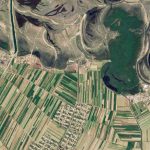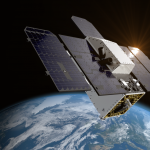The Top Global Trends Driving the Fourth Agricultural Revolution
Co-written with Deepthi Shankar
Technological innovations are beginning to transform every link in the food chain, from seed to fork. In developed countries, digital technologies and analytics are making farm operations more insight-driven and efficient. Here are the five global trends catalyzing digital transformation in agriculture.
Rising population and resulting increase in food demand. According to a UN FAO report, the world population is expected to rise to 10 billion by 2050 and boost agricultural demand by 50 percent compared to 2013, with an increase in demand for proteins, fruits, and vegetables.
Declines in farm income. Farm profits are at a record 12-year low. In the first forecast of 2018, the US Department of Agriculture (USDA) is predicting farm profits to dwindle 6.7 percent to $59.5 billion, which is the lowest it’s been since 2006.
Digital native consumers. There is a rising generation of digital-native, tech-savvy customers who come with expectations based on their experience in other digital-first industries. Meanwhile, consumer tastes and behaviors are evolving, with millennial customers driving demand for organic products, sustainable retail supply chains, and zero deforestation commitments.
Digital disruption and consolidation. Ag input retailers are facing pressure from increasing consolidation in the seed and crop protection industry and from changing demands from digitally native customers. Traders lack foresight into the crop volume and face highly volatile prices. And digitization across the value chain and expansion of in-house storage among farmers is disrupting their fundamental business model.
Food loss and waste. According to UN FAO, about one-third of all food produced – approximately 1.3 billion metric tons — gets lost or wasted, while 795 million people go hungry. Every year, consumers in rich countries waste almost as much food (222 million metric tons) as the entire net food production of sub-Saharan Africa (230 million metric tons). Moreover, developing countries deal with a lack of cold chain infrastructure to transport fruits, vegetables and meat over long distances.

The agriculture value chain, including total sales in billions over a single year.
Precision farming and technological advancements along the supply chain can help address these challenges and meet rising global food demand, driving the next wave of agricultural revolution. Here are four major technology trends shaping the fourth agricultural revolution.
Farm Robotics. Robotics are getting better and better, and their viability is being explored across the agricultural value chain, from planting to harvesting, to meat processing and grocery logistics. John Deere spent $305 million last year to acquire Blue River technology, a startup that makes robots capable of identifying unwanted plants and spraying them with high-precision herbicide, reducing input costs and increasing efficiency. There is also new demand for robotics as a service, especially when it comes to fruit picking. By 2024, robots are forecast to navigate the farm to the tune of an estimated $5.7 billion agbot industry, five times the market size in 2016.
Remote Sensing. A myriad of remote sensing techniques, from in-field sensors to drones to satellite imagery, are allowing farmers to view their crops from multiple perspectives. With advances in computing and sensor technology, farmers can now get access to high-cadence, broad area coverage with field-level detail. All these provide farmers up-to-date information in real-time, so changes can be made accordingly to their crops.

NDVI values across fields using central pivot irrigation in Saudi Arabia.
Machine Learning and Analytics. Machine learning and advanced analytics are being used to mine data for trends in every sector, and agriculture is no exception. These can be applied before seed planting with plant breeders. Machine learning can predict which traits and genes will be best for crop production, giving farmers the best breed for their location and climate. At the field level, machine learning techniques that use satellite data to distinguish between crops, like corn and soy, providing valuable information for crop insurance, logistics, and commodity markets. The intersection of robotics and data from an increasingly connected farm will accelerate this trend even further.
Blockchain. Earlier this year, one of the world’s largest commodity traders, Louis Dreyfus (LDC) joined forces with ING, ABN Amro, and Societe Generale to complete the agricultural sector’s first blockchain commodity transaction. The prototype was used to execute a soybean shipment transaction from the United States to China. Featuring no paper contracts, certificates, or manual checks, the soybean shipment transaction from seller LDC to Chinese buyer Shandong Bohi was completed at five times the speed of a paper-based trade using ING’s blockchain prototype, increasing transparency, traceability and efficiency along the supply chain.
Agriculture is undergoing massive transformation because of digitization, creating market dynamics that are difficult to predict. With investors putting more than $700 million into agtech companies in 2017 (about double the previous year), more change and disruption are on the horizon.
To learn more about how advanced remote sensing is transforming precision agriculture, check out our Precision Ag eBook, and stay tuned for upcoming blogs on these and other topics impacting the agriculture industry.




